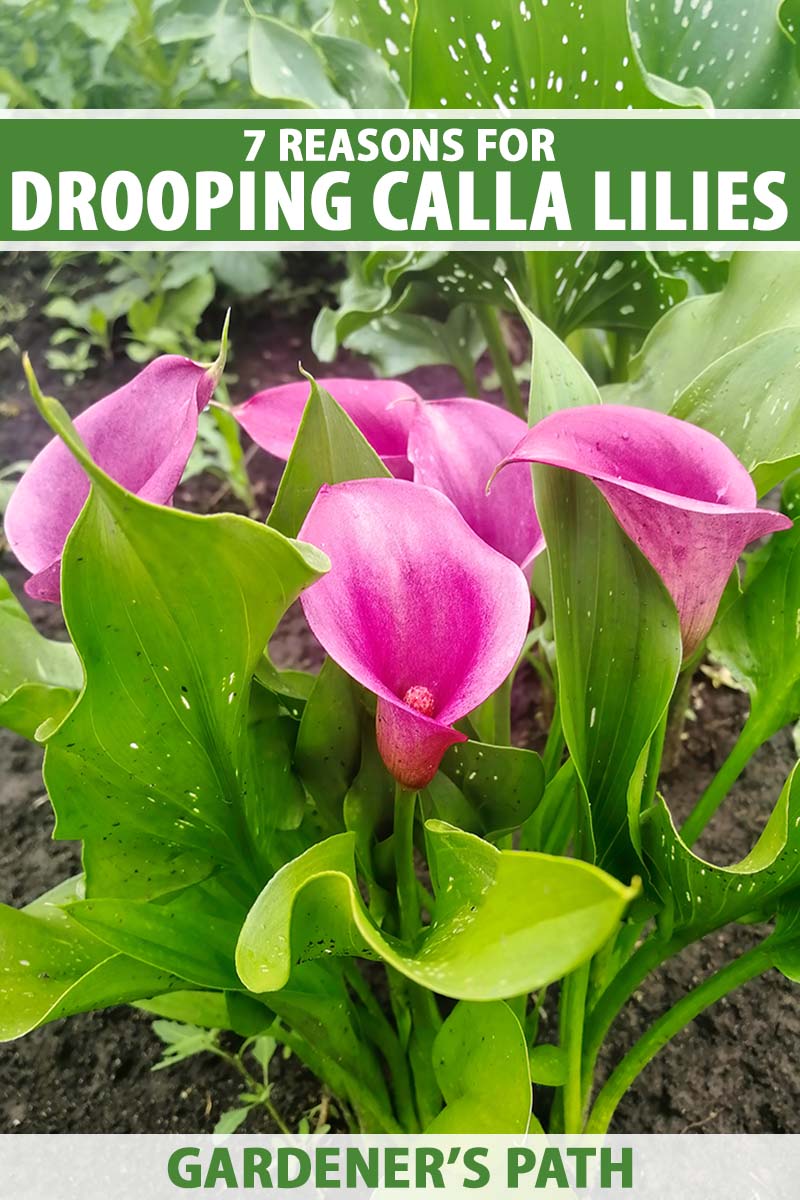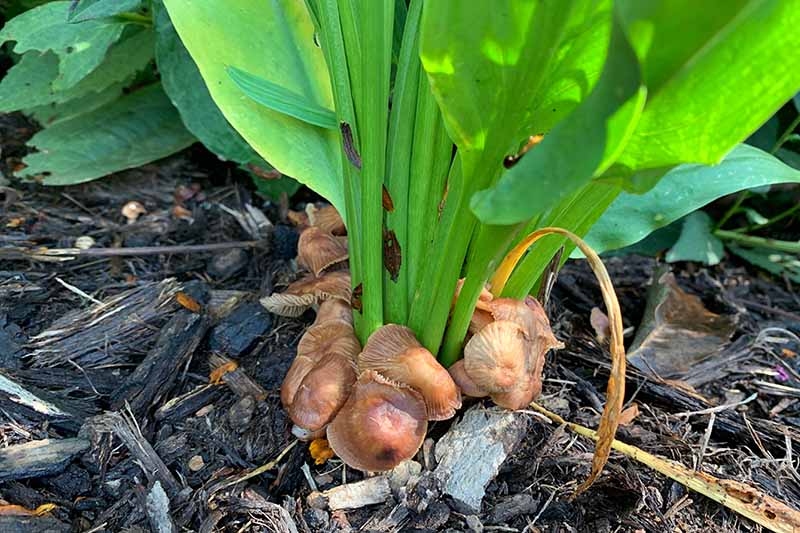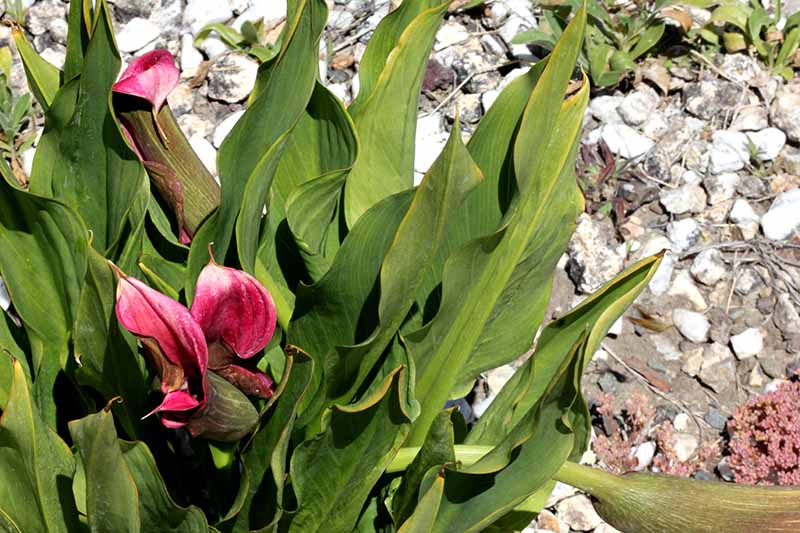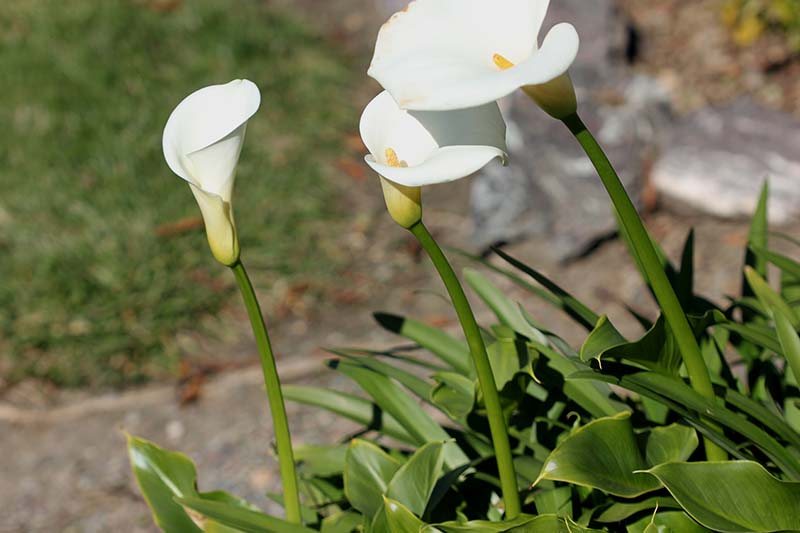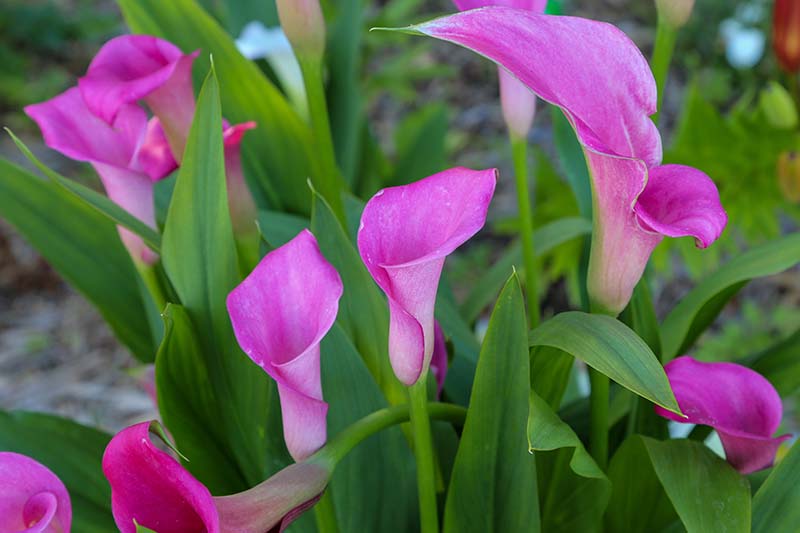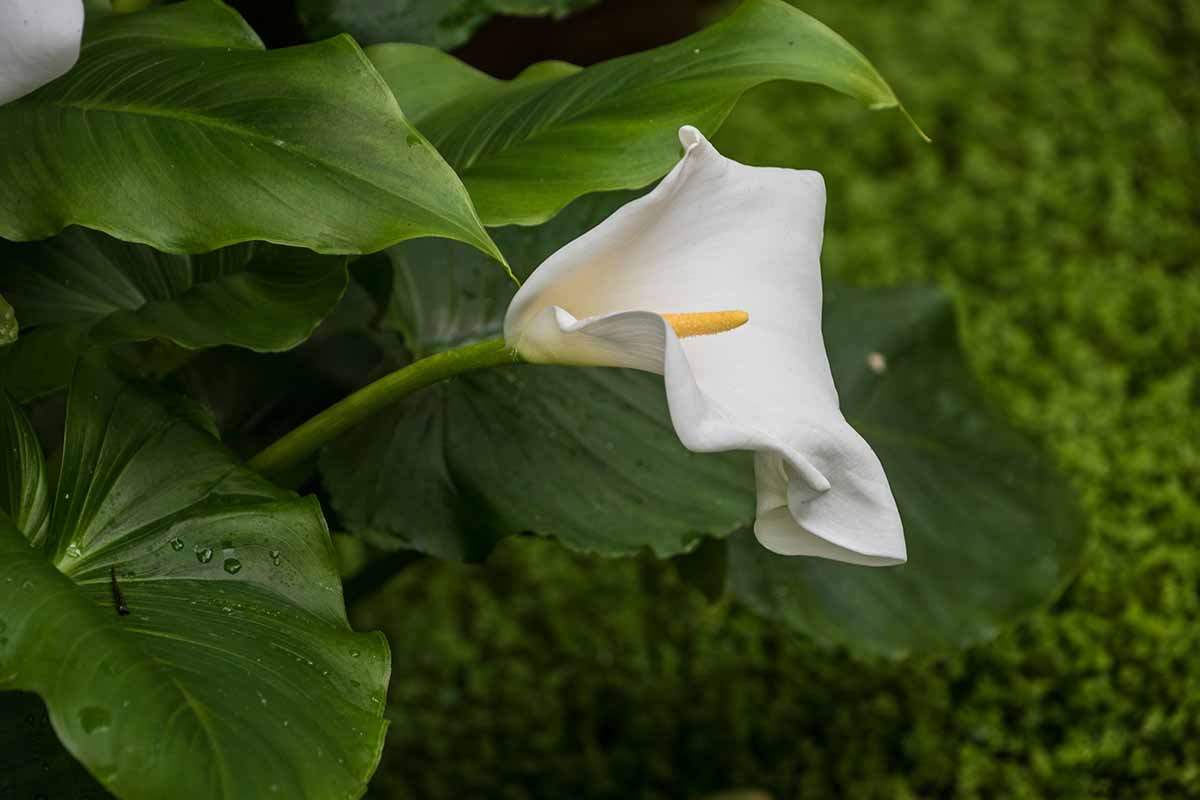Suited to year-round cultivation in USDA Hardiness Zones 8 to 11, they are grown as annuals in other temperate zones. We link to vendors to help you find relevant products. If you buy from one of our links, we may earn a commission. Each has an upward-facing, funnel-shaped floral structure consisting of an artistically scrolled spathe surrounding a thick yellow spadix. A range of colors is available. In our calla lily growing guide, we discuss all you need to know to grow your own. This guide focuses on one problem you may encounter during cultivation: drooping. Read on to learn why callas sometimes have floppy stems and what you can do about it. Here’s what we’ll cover: Let’s jump right in!
1. Bacterial Soft Rot
Soilborne bacterial soft rot, aka rhizome rot and caused by Erwinia carotovora, undermines flora by attacking the fleshy roots. The damage progresses through the stems, causing yellowing, stunting, and collapse. If the stems are flopping over in addition to exhibiting discoloration and deformity, this may be the reason. Per the pros at the UMass Extension, control measures include reducing the use of nitrogen-rich fertilizer and boosting the calcium in the soil. Bone meal provides calcium and phosphorus, two essential minerals for healthy growth. It is easily added to soil per package instructions. They also recommend not cutting flowers while they are wet, as water may facilitate pathogen penetration. When planting new rhizomes, or dividing existing plants for relocation, be sure that the soil drains well. Handle the tubers carefully to avoid damaging them, and consider dipping them in a copper fungicide before putting them into the ground. Dispose of rotten rhizomes in the trash.
2. Excess Moisture
While the calla thrives in moist soil, oversaturation may cause limp stems and root rotting. Causative factors include excessive rainfall, poor drainage, and overwatering. If you find your lilies sitting in puddles or with mushrooms growing beside them, it’s likely that the soil is compacted and draining poorly. Dig a bit and examine the rhizomes. If they are soft, discard them in the trash. If they are still firm, relocate entire plants to a well-draining area that gets at least six hours of sunlight each day. Alternatively, amend the soil in their current location with compost or humus to improve drainage. Disturbing rhizomes pre-bloom may result in no flowers until the following year.
3. Nitrogen Overload
Nitrogen is essential for healthy growth, but too much can result in an overabundance of foliage and too few flowers. It can also result in leggy growth that droops. To avoid this cause of floppy stems, choose a well-balanced fertilizer that does not contain an excessive quantity of nitrogen. The University of Minnesota Extension experts recommend a 5-10-5 or 5-10-10 NPK product.
4. Phototropism
Some flora tends to grow toward sunlight, a phenomenon called “phototropism.” Zantedeschia plants like to lean toward the sun. If you grow yours in a shady area or beneath a larger plant, the stems may bend as they “reach” for sunlight. You may notice this with an indoor or outdoor pot as well. In this case, rotate the container daily to encourage the stalks to remain upright. As for those growing in the garden, consider relocating them to a place with at least six hours of sunlight per day and no overhead companions.
5. Powdery Mildew
Zantedeschia is prone to powdery mildew, a fungal condition that thrives in moist air and is especially prevalent on crowded foliage. It may sneak up on you as the leaves acquire a powdery grayish-white coating, but all else seems fine. Before you know it, the stems are leaning, and the foliage turns yellow and brown before dropping off. Address this disease by cutting off and discarding affected stems and foliage in the trash and treating per the recommendations in our article on powdery mildew. You’ll find options ranging from milk to copper fungicide to try at home. This fungus is most likely to rear its ugly head in shady placements, where the foliage is dense and the leaves are wet. These conditions support the humidity it loves. You can make your lilies unattractive to fungi by spacing them to allow for mature dimensions and ample airflow, dividing mature plants to prevent overcrowding, growing in full sun, and watering the soil and not the foliage.
6. Top-Heavy Blooms
Sometimes stems bend toward the ground not because of sickness or moisture stress, but simply because the gorgeous flower heads are too heavy for them. This reason is likely to be the culprit with large hybrid blooms, those with leggy stems, and during heavy rainfall. Erecting a support structure with garden stakes and twine provides support for plants that need it.
7. Underwatering
A calla lily requires about an inch of moisture per week. If it doesn’t rain, supplemental watering is essential. With little drought tolerance, when the soil dries out completely, the leaves and stems hang limply downward. Warm weather and wind accelerate dehydration, and it’s not long before green turns to brown. To make sure the problem is a lack of water and not an excess, feel the soil, or use a moisture meter, to judge its moisture content. Check the amount of precipitation that your garden is receiving, by using a rain gauge. And water deeply if the ground is dry. As you introduce more rhizomes to your landscape, use these seven reasons as a guide to keep them standing tall and in the best of health. If you find yourself with stems that bend and hide their pretty faces, and they are unmarred by disease or decay, cut them and do the following:
Place the bare stems in a vase of water.Place the vase in a sunny location, and you may find that the stems perk up.Each day, change the water and give the stems a fresh cut for flowers that last up to two weeks.
Plant calla lilies for colorful blooms in the garden, indoor and outdoor containers, and fresh vase arrangements throughout the summer growing season. Do you grow this plant at your house? Tell us about it in the comments section below. If you found this guide informative and want to read more about calla lilies, we recommend the following:
21 of the Best Calla Lilies for Sensational Summer BloomsCalla Lily Hardiness: Will Zantedeschia Come Back In Spring?Tips for Calla Lily Winter Care
